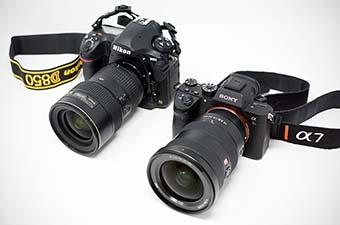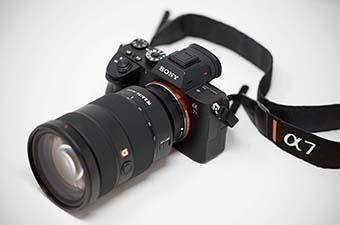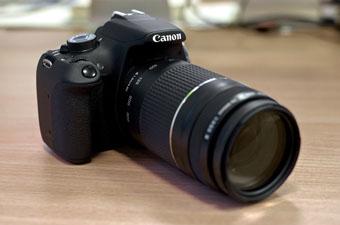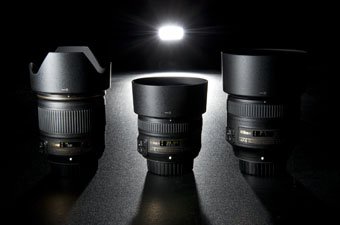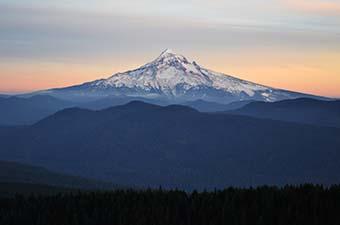For serious amateurs and photography enthusiasts, the Nikon D7100 is the company's top DX-format camera, featuring a large 24.1-megapixel sensor and Full HD 1080p video capability. Below are the best lenses for the Nikon D7100—Nikon FX (full-frame) lenses are compatible with Nikon DX cameras but their full optical capability and value will not be realized. To offest any distortion, the Nikon D7100 has automatic distortion control built into the camera.
Nikon D7100 Kit Lenses
Nikon 18-105mm f/3.5-5.6 VR ($1,197 for the kit)
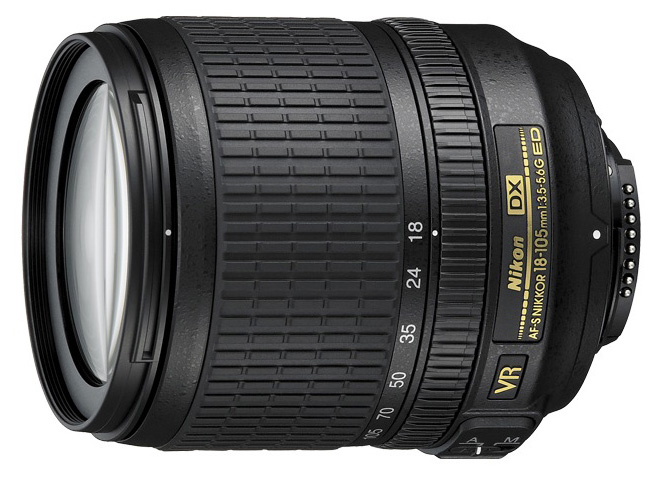
Max Aperture: f/3.5
Pros: Versatility.
Cons: Softness in the corners, plastic mount.
The D7100 is sold with the Nikon 18-105mm VR lens for around $1,300 total. Unfortunately, the it's an average lens—it can be soft in the corners, has a plastic mount, and the focal length range isn’t particularly useful. If you're going to buy the Nikon D7100 in a kit, we recommend the 18-140mm below, which is the same price, has better optics, and a longer reach. It’s also a fine idea to forego the kits altogether and focus on true all-in-one lenses or specialty primes and zooms.
See the Nikon 18-150mm Kit
Nikon 18-140mm f/3.5-5.6 VR ($1,197 for the kit)

Max Aperture: f/3.5
Pros: A good value.
Cons: Significant distortion (can be corrected in-camera).
Versatile zoom lenses have become increasingly popular among those who want the flexibility to carry only one lens instead of a bag full of primes. Released in 2013, the Nikon 18-140mm VR offers just that, along with some impressive optics to boot. With this lens you get sharp images throughout its zoom range, vibration reduction for when natural light is low, and fast and accurate autofocus. Perhaps the biggest shortcoming of the 18-140mm is distortion, but this can corrected in-camera on the D7100. You may want to add other specialty lenses down the road, but the 18-140mm is a great start.
See the Nikon 18-140mm Kit
All-In-One Lenses
Nikon 18-200mm f/3.5-5.6 VR II ($497)
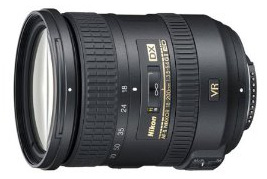
Max Aperture: f/3.5
Pros: Versatility.
Cons: Some distortion at the wide end.
If you don’t need the longer telephoto reach of the Nikon 18-300mm below, the Nikon 18-200mm VR II is a great all-purpose lens for everything from wide-angle shots to close-ups. With an equivalent zoom range of 27-30mm on a 35mm camera and vibration reduction, it captures sharp images throughout its range and has a sturdy build that is built to last. The biggest shortcoming of the 18-200mm VR II is that it’s a bit short for certain types of telephoto photography like wildlife. But for travel, portraits, and as a walk-around lens, the 18-200mm is a nice choice.
See the Nikon 18-200mm VR II
Nikon 18-300mm f/3.5-6.3 VR ($897)
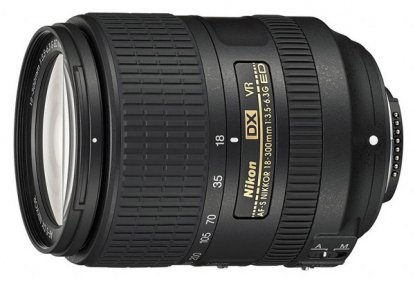
Max Aperture: f/3.5
Pros: Extremely versatile.
Cons: Some softness at the long end.
For those who want to cover virtually the entire spectrum of focal lengths without changing lenses, the new Nikon 18-300mm VR is an excellent choice. Released in 2014, the new version of this all-in-one lens is considerably lighter and cheaper than the old one, with the only sacrifice being a maximum aperture at the long end of f/6.3 instead of f/5.6. The changes, however, are almost all positive and make it the leading all-in-one lens for the Nikon D7100 in our book. It even weighs less than the Nikon 18-200mm above.
See the Nikon 18-300mm VR
Wide-Angle Lenses
Nikon 10-24mm f/3.5-4.5 ($797)

Max Aperture: f/3.5
Pros: Nikon’s best wide-angle lens for DX.
Cons: Distortion at the wide end and no vibration reduction.
The 10-24mm f/3.5-4.5 is Nikon’s best DX format wide-angle lens. It’s wider and sharper than any other comparable lens and excellent for landscape photography and wide-angle architecture and city shots. As is the case with virtually all wide-angle zoom lenses, you can expect some distortion and its performance in low light isn’t as good as a prime lens (the 10-24mm does not come with vibration reduction). But we love the zoom range, which is equivalent to 15-36mm on a 35mm camera and covers virtually all of the useful wide-angle focal lengths from ultra-wide to a normal field of view.
See the Nikon 10-24mm
Nikon 16-85mm f/3.5-5.6 VR ($499)
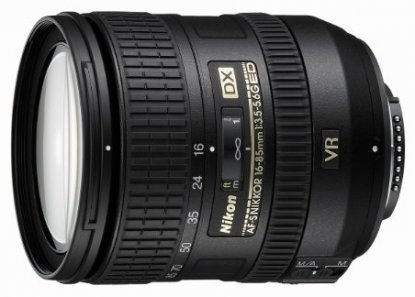
Max Aperture: f/3.5
Pros: Excellent optical performance.
Cons: A bit on the bulky side.
Professsionals photographers favor prime lenses, but it’s hard to knock a top-flight zoom like the Nikon 16-85mm VR. This is a high quality and versatile zoom lens covering focal lengths from wide-angle to close-up portraits. The lens is sharp, has fast autofocus, less distortion than the kit lenses or all-in-one lenses, and vibration reduction. For travel and portrait shooters, it's a great choice.
See the Nikon 16-85mm VR
Everyday and Portrait Lenses
Nikon 18-55mm f/3.5-5.6 VR II ($247)
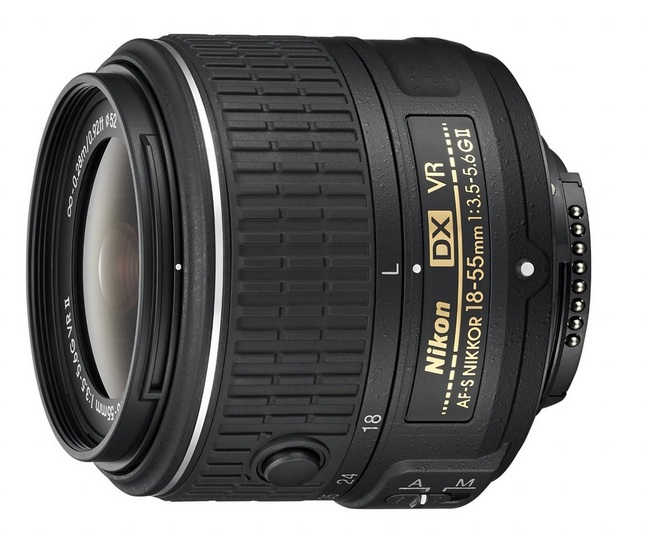
Max Aperture: f/3.5
Pros: Lightweight and sharp for a "kit" lens.
Cons: Plastic mount, some distortion at the wide end.
Yes, this is the kit lens you’ll find offered with other Nikon DSLRs like the D5300, but that doesn’t mean you shouldn’t at least consider it with the D7100. Many kit lenses are cheaply constructed and the optics suffer, but the 18-55mm VR II is an exception. The lens has a plastic mount but captures sharp images, has vibration reduction, and is extremely light at only 6.9 ounces. And with a price tag of less than $250, the Nikon 18-55mm VR II is a tempting option for a walk-around lens.
See the Nikon 18-55m VR II
Nikon 35mm f/1.8 ($177)
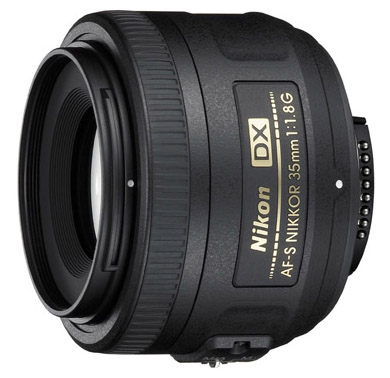
Max Aperture: f/1.8
Pros: Low cost, lightweight, excels in low light.
Cons: None.
There aren’t any negative things to write about the Nikon 35mm f/1.8. It’s cheap, captures sharp images, has a durable metal mount, and shoots extremely well in low light. You won’t find a better prime lens for travel, portraits, and everyday life. One minor weakness of the Nikon 35mm f/1.8 is that aside from its metal mount, the lens has a plastic build that won’t last forever (this isn’t a huge risk considering the price).
See the Nikon 35mm
Nikon 50mm f/1.8 ($197)
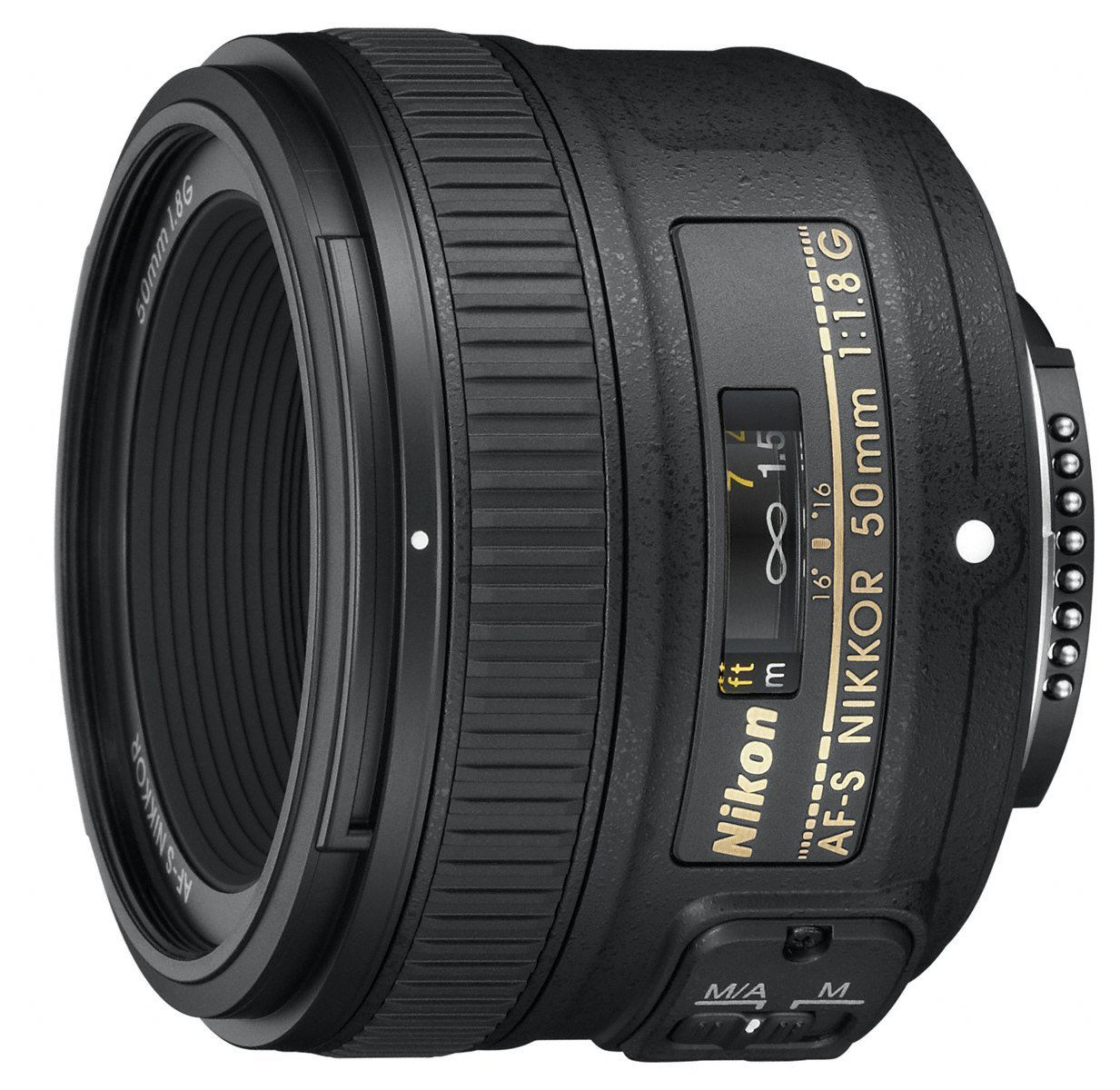
Max Aperture: f/1.8
Pros: Low cost, lightweight, excels in low light.
Cons: None.
Similar to the Nikon 35mm above, the popular Nikon 50mm f/1.8 is a great prime lens at a low price. The lens is sharp, performs well in low light, has fast and accurate autofocus, and weighs only 6.6 ounces. The 50mm f/1.8 is an FX lens but is fully compatible with DX cameras like the Nikon D7100 with an effective focal length of 75mm.
See the Nikon 50mm
Macro Lenses
Nikon 40mm f/2.8 DX Micro ($247)
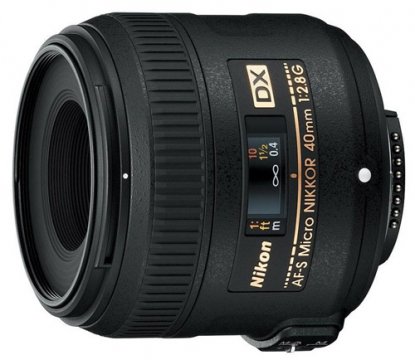
Max aperture: f/2.8
Pros: Sharp and accurate.
Cons: 40mm requires getting pretty close to your subject.
You have two main macro options for the D7100 (Nikon uses the word “micro”): the 40mm f/2.8 and the 85mm f/3.5 below. The 40mm Micro is best for non-moving subjects that are easily approached, and the lens has a faster maximum aperture than the 85mm by two-thirds of a stop. We love this lens—it’s sharp, performs well in low light, and can focus as close as 6.4 inches from your subject. For uses like flowers, food, or product photography, this is a great macro lens at a good price.
See the Nikon 40mm Micro
Nikon 85mm f/3.5G DX Micro ($527)
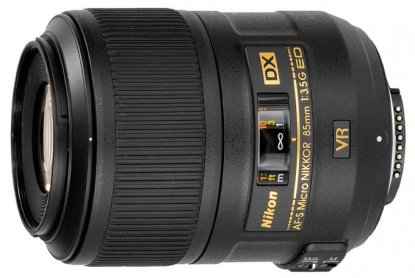
Max aperture: f/3.5
Pros: Very sharp.
Cons: Expensive and the build feels cheap.
For those who shoot macro photography outdoors—think living things like insects, animals, and flowers—the 85mm f/3.5 Micro is Nikon’s leading lens for subjects that require some distance. This lens is slower than the 40mm f/2.8 above, but does comes with vibration reduction to help cover the difference. It’s also sharp and focuses quickly, although it’s not quite as good optically as the 40mm f/2.8. We wish this lens was cheaper, but if you need some working distance for macro, this is your best DX option.
See the Nikon 85mm Micro
Telephoto Zoom Lenses
Nikon 55-200mm f/4-5.6 VR II ($347)
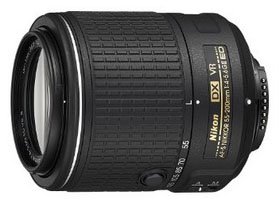
Max Aperture: f/4
Pros: Lightweight and good optics for the price.
Cons: Plastic mount.
In 2015 Nikon released an updated version of their trusty 50-200mm VR. The new 50-200mm VR II is about an ounce lighter than its predecessor and collapses down when not in use, making is shorter. Other than the physical changes, the key specs are the same in terms of focal length and aperture, so the choice really comes to price. As supplies dwindle the 55-200mm VR II will become the standard lens at this focal length. For more reach, try the 55-300mm below.
See the Nikon 55-200mm VR II
Nikon 55-300mm f/4.5-5.6 VR ($397)
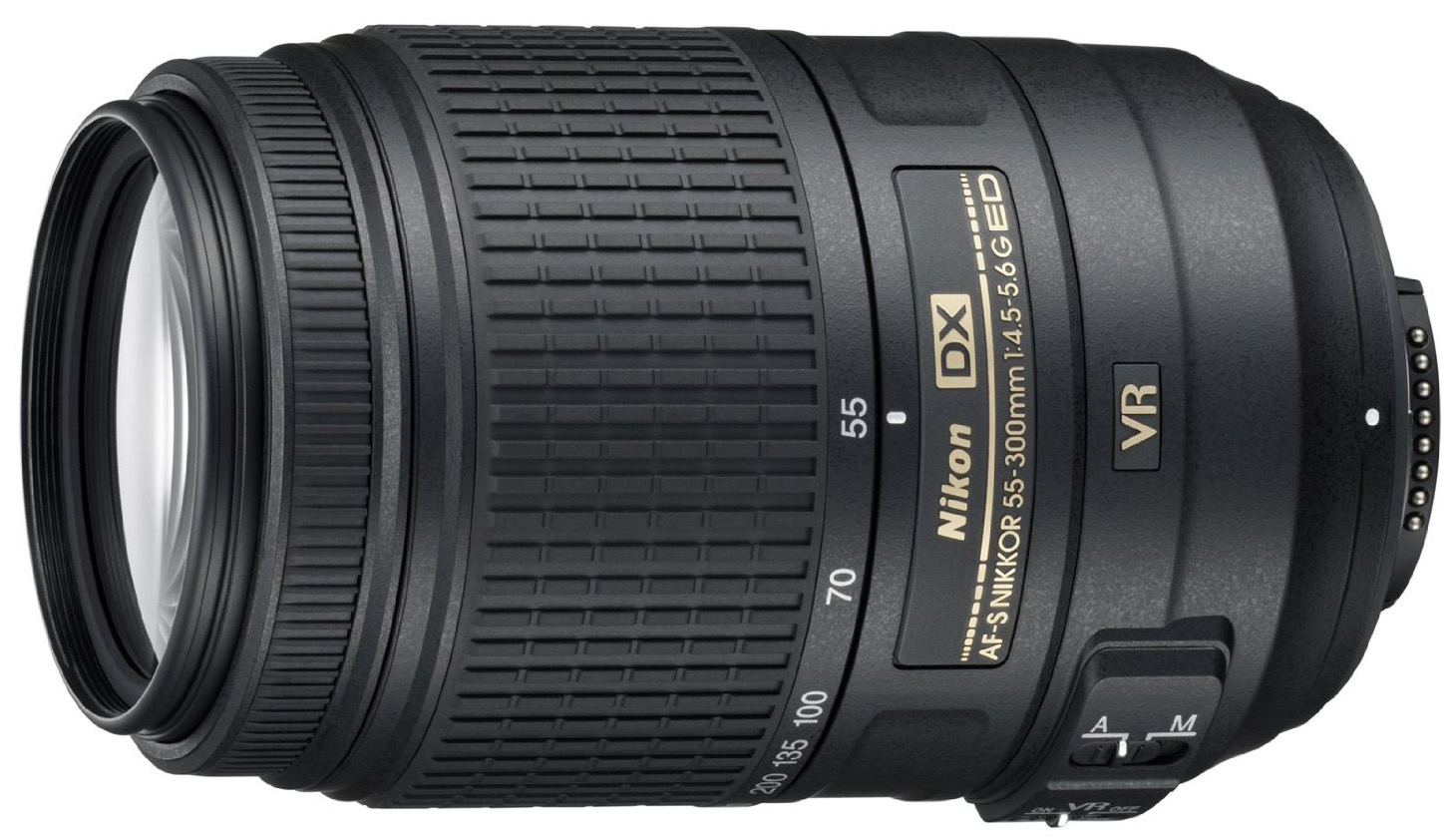
Max Aperture: f/4.5
Pros: Long zoom rage.
Cons: Autofocus can be slow.
The Nikon 55-300mm VR is the top telephoto zoom for DX cameras. The lens captures sharp images, good colors, and features vibration reduction (camera shake can be an issue with long zoom lenses). We like the extra 100mm of zoom range, which can make the difference for wildlife and other close-ups.
See the Nikon 55-30mm VR
Nikon D7100 Lens Comparison Table
| Lens | Price | Type | Aperture | Weight | VR | Filter |
|---|---|---|---|---|---|---|
| Nikon 18-105mm f/3.5-5.6 VR | $397 | Kit | f/3.5-5.6 | 14.8 oz. | Yes | 67mm |
| Nikon 18-140mm f/3.5-5.6 VR | $487 | Kit | f/3.5-5.6 | 17.3 oz. | Yes | 67mm |
| Nikon 18-200mm f/3.5-5.6 VR II | $497 | All-in-one | f/3.5-5.6 | 19.8 oz. | Yes | 72mm |
| Nikon 18-300mm f.3.5-6.3 VR | $897 | All-in-one | f/3.5-5.6 | 19.4 oz. | Yes | 72mm |
| Nikon 10-24mm f/3.5-4.5 | $797 | Wide angle | f/3.5-4.5 | 16.2 oz. | No | 77mm |
| Nikon 16-85mm f/3.5-5.6 VR | $499 | Wide angle | f/3.5-5.6 | 17.1 oz. | Yes | 67mm |
| Nikon 35mm f/1.8 | $177 | Everyday | f/1.8 | 7.1 oz. | No | 52mm |
| Nikon 50mm f/1.8 | $197 | Everyday | f/1.8 | 6.6 oz. | No | 58mm |
| Nikon 40mm f/2.8 Micro | $247 | Macro | f/2.8 | 9.9 oz. | No | 52mm |
| Nikon 85mm f/3.5 VR Micro | $527 | Macro | f/3.5 | 12.5 oz. | Yes | 52mm |
| Nikon 55-200mm f/4-5.6 VR II | $347 | Telephoto | f/4-5.6 | 10.6 oz. | Yes | 52mm |
| Nikon 55-300mm f/4.5-5.6 VR | $397 | Telephoto | f/4.5-56 | 18.7 oz. | Yes | 58mm |


